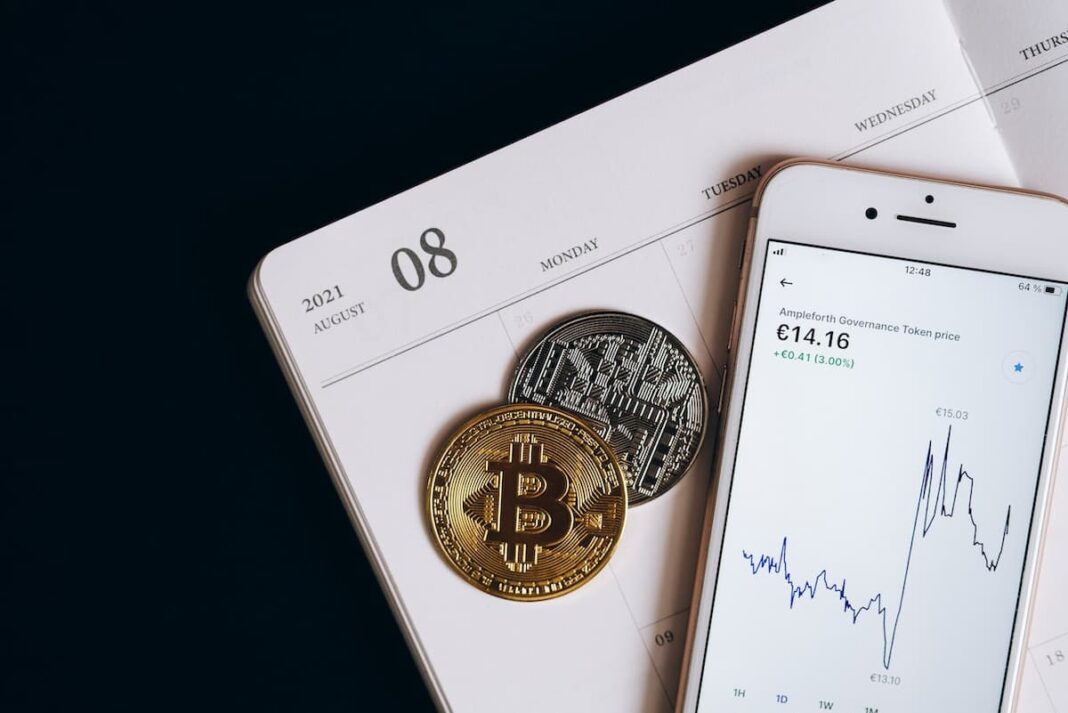In today’s bitcoin and cryptocurrency news, read about how Bitcoin (BTC) and Ethereum (ETH), the industry’s two largest digital assets, have led the rebound in the previous 24 hours, giving the popular “Uptober” meme a fighting chance. In addition, despite their apparent distaste for blockchain technology, senior officials at JPMorgan are eager to use it to gain themselves financially. Investment in blockchain technology has been prioritized by the bank, despite the institution’s frequent criticism of the sector. Each year, the bank puts hundreds of millions, if not billions, of dollars into cryptocurrency. Lastly, the Monetary Authority of Singapore (MAS) recommended that businesses dealing in cryptocurrency neither extend loans to their clients nor accept credit card payments from them.
Bitcoin, Ethereum Rally Overnight Trades $1 Billion
Original Source: Bitcoin, Ethereum Rally Liquidates Over $1 Billion in Trades Overnight
Chances for the famous “Uptober” meme to live up to its promise are suddenly alive again as crypto markets rebounded in the past 24 hours. Bitcoin (BTC) and Ethereum (ETH), the industry’s two largest digital assets, led the resurgence.
October has historically been positive for the leading cryptocurrency, with monthly gains recorded ten times in the last 13 years, according to Bitcoin Monthly Return. Last year’s October rally, for example, helped Bitcoin reach its highest-ever value above $69,000 in early November.
Fears spread among investors this year as Bitcoin struggled between $19,000 and $20,000 for a month.
The leading cryptocurrency surged 5% on Tuesday to reclaim $20,000 for the first time since the beginning of October. The rally continued overnight to a current price of $20,659, or 7.2% over the day, per CoinGecko.
Ethereum’s price movement is even more impressive as the second-largest cryptocurrency spiked as much as 14% over the span, trading around $1,536 at the time of this writing.
The latest price action resulted in $1.13 billion liquidated across markets in the last 24 hours, with more than 87%, or $979 million, being short positions, or bets against price rise.
In crypto markets, liquidation refers to when an exchange closes positions due to a partial or total loss of initial margin. This happens when a trader can’t meet the margin requirements for a leveraged position, meaning they don’t have enough funds to keep the trade open.
JPMorgan Hates Bitcoin, But Web3 Investments Think Differently
Original Source: JPMorgan May Hate Bitcoin, but Millions in Crypto Web3 Investments Think Differently
JPMorgan Chase appears to hate Bitcoin and crypto, if you ignore the millions of dollars they are throwing at the sector.
The investment bank has invested in blockchain and cryptocurrency while simultaneously downplaying the industry. JPMorgan president Daniel Pinto told CNBC on Monday that crypto is a small asset class that “is kind of irrelevant in the scheme of things.”
Dear JPMorgan, You Seem Confused by Crypto
JPMorgan Chase is the largest of the big four investment banks, but on crypto it seems confused.
In a recent interview with CNBC, company president Daniel Pinto downplayed crypto’s influence on international markets.
“The current form of crypto has become a small asset class that is kind of irrelevant,” said Pinto. The executive did concede that something may be brewing in the wider sector, saying, “…the technology, the concepts, something is probably going to happen there – just not in its current form.”
JPMorgan’s disinterest is a step up in some ways.
In 2021, company CEO Jamie Dimon said, “I personally think Bitcoin is worthless.”
Prior to this, Dimon called Bitcoin a “fraud” and “fools gold” and cryptocurrencies “decentralized Ponzi schemes.”
Following the JPMorgan Crypto Trail
While JPMorgan executives have been having fun bashing blockchains, the company has been pursuing policies that contradict their edicts.
In 2019, the company launched JPM Coin, its own cryptocurrency (or decentralized Ponzi scheme?).
In 2020, the bank created a blockchain division called Onyx, which “pioneered the world’s first bank-led blockchain platform for the exchange of value, information, and digital assets.”
The company also has blockchain and crypto investments.
This year, the bank participated in a $60 million funding round for on-chain analysis firm Elliptic and a $32 million funding round with competitor TRM Labs.
2021 deals were significantly bigger. In Jan. 2021, JPMorgan invested $100 million in Figure, a company using blockchain technology in mortgages. Other investments included ConsenSys, the maker of MetaMask. JPMorgan participated in a funding round with UBS and Mastercard, raising $65 million.
What Does It All Mean?
JPMorgan’s total investment in blockchain is difficult to measure, but the company spends $12 billion per year on technology projects. That includes machine learning and blockchain.
Why then all the hate from top men? When words and actions misalign, it’s probably best to judge them by their actions. Even haters want those crypto gains.
The Monetary Authority of Singapore Has Proposed a Restriction on Cryptocurrency Credits
Original Source: Singapore’s MAS proposes banning cryptocurrency credits
The Monetary Authority of Singapore (MAS) is considering suggestions to better regulate the cryptocurrency business after the bankruptcy of the Singaporean crypto hedge fund Three Arrows Capital (3AC).
The central bank of Singapore has launched two consultation papers on recommendations for regulating digital payment token service providers (DPTSP) and stablecoin issuers under the Payment Services Act.
Published on Oct. 26, both consultation papers aim to limit consumer risks from crypto trading and improve stablecoin-related transactions.
The first document covers recommendations for digital payment token (DPT) services or services related to key cryptocurrencies like Bitcoin (BTC), Ether (ETH), or XRP (XRP).
According to the authority, “any form of credit or leverage in the trading of DPTs” would “magnify losses,” potentially leading to higher losses than a customer’s investment.
In section 3.20, MAS sought to restrict DPTSPs from providing retail clients “any credit facility,” whether in fiat or crypto. According to the authority, crypto service providers shouldn’t take credit card deposits for crypto services.
“MAS proposes that DPTSPs should ensure that customers’ assets are segregated from the DPTSPs’ own assets and held for the customer,” the central bank said, pointing to the recent failure of numerous crypto firms, notably 3AC’s insolvency in June.
The MAS also proposed that DPTSPs explore introducing consumer exams to assess retail customers’ knowledge of crypto risks.
The second consultation paper proposes a regulatory strategy for stablecoins in Singapore, establishing business and operational requirements for stablecoin issuers.
In section 4.21 of the document, MAS proposed to limit stablecoin issuers from lending or staking single-currency pegged stablecoins (SCS) and from lending or trading other cryptocurrencies.
“This is to ring fence and minimize risks to the SCS issuer in lieu of a comprehensive risk-based capital system. Such activities can still be done from other linked organizations, the consultation paper says.
The regulator also proposed a minimum base capital of $1 million or 50% of yearly operational expenses of the SCS issuer. The capital should be held at all times and comprise liquid assets, MAS said.
The agency urged interested parties to submit opinions on the proposals by Dec. 21, 2022.
As previously reported, the crypto winter of 2022 has been particularly detrimental for cryptocurrency lenders as several organizations proved unable to pay back their debts due to a large market decrease. Some Bitcoin analysts are sure that crypto lending can survive current bad market, but they must tackle concerns connected to short-term assets and liabilities.
Summary of today’s bitcoin and cryptocurrency news
To put it simply, over the past day, more than $1 billion has been liquidated, with Bitcoin accounting for about $550 million and Ethereum for about $476 million; the largest single liquidation order was a $3.05 million ETH-USDT swap on the OKX exchange. In terms of total volume, FTX had $862 million in liquidations, with nearly 77% of that coming from short positions.
In addition, to estimate how much JPMorgan has spent on blockchain is challenging, but the bank has said it invests $12 billion annually in technology. Yes, AI and ML are as much a part of blockchain as any other technology. Then why do so many powerful men hold such animosity? It’s tough to say for sure, but when someone’s words and deeds don’t match up, it’s usually best to go with your gut and judge them based on their behavior. It’s no secret that everyone covets the riches that can be made in the cryptocurrency market, even their enemies.
Finally, any feedback on the proposals should be sent to the regulator by December 21, 2022, at the latest. Cryptocurrency lenders have taken a major hit during the crypto winter of 2022, as many companies in this industry have been rendered unable to meet their repayment obligations as a result of the sharp decline in cryptocurrency prices. It has been predicted by some Bitcoin experts that crypto lending will be able to weather the current bear market, but only if problems involving short-term assets and liabilities are resolved.







